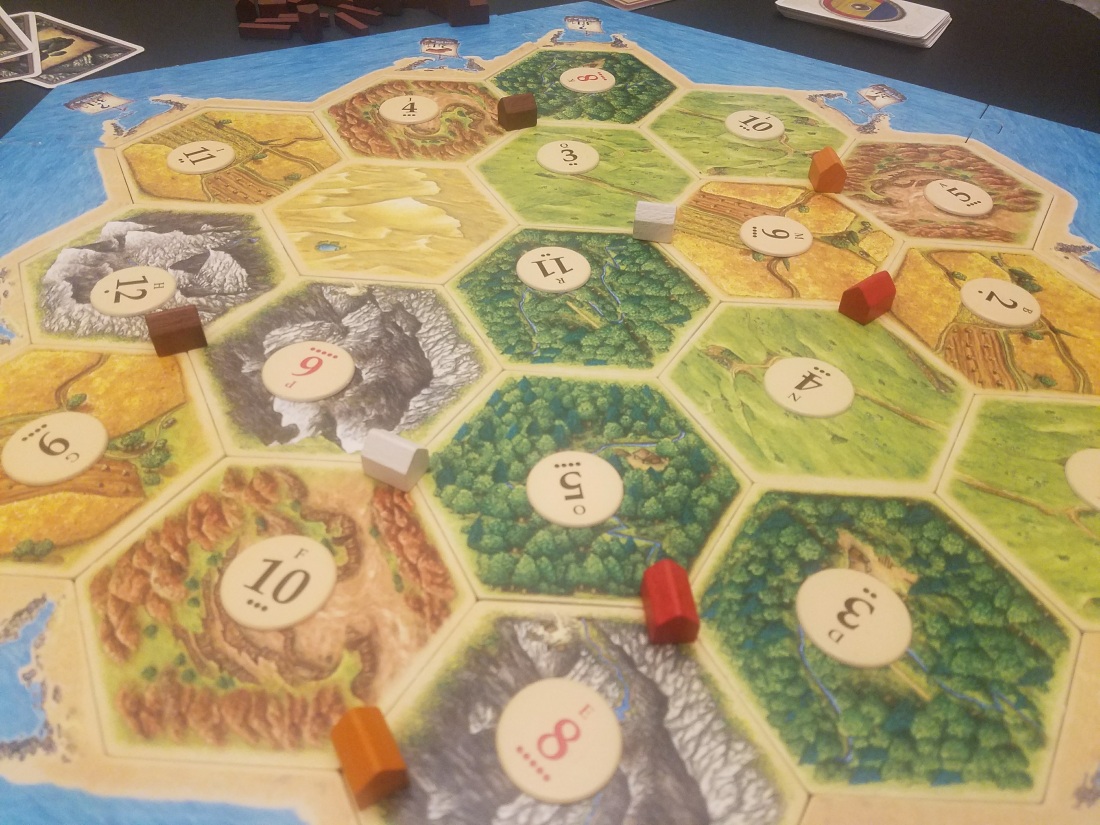Have you ever noticed that every time you play Settlers of Catan, someone invariably casts themselves as the unfortunate recipient of the worst luck to have ever befallen a human soul? I’ve sure done it (after all, it does help garner trades). But there are some cognitive distortions at play. For one, any event that ever happens has probability arbitrarily close to zero. So anytime someone looks back on an event and asks something like, “What was the probability of that???” You can pretty safely say zero, after you condition on virtually everything that happened before it. And that’s the tricky thing with Catan! Even normal-looking histograms feel weird when you live and die by the fate of each and every roll.
This did make me want to look a layer more deeply into the strategy. I of course felt that I won because I placed my houses in the best spots compared to my competitors (and as any Catan player knows, kept as a low a profile as possible!). But my Orange competitor seemed to attribute her loss to a curse, perhaps owing to a crime committed in a former life.
This post assumes you’ve already played Settlers of Catan at least once, so I won’t rehash the rules here. If you haven’t, you should stop reading this and give it a go. It is fun (though I have my quams with the mechanic, I’ll save that for a later post)!

Well, clearly when placing these little homes, one wants to concentrate on tiles with numbers close to 7 because they are more likely to be rolled on two 6-sided’s. If you add it up, everyone has about the same probability of getting a resources on a given roll. Brown and White have the slight advantage (20/32 resources per roll) vs. Orange and Red (19/32resources per roll). But this is only looking at the first moment. No one invests that way! We’ve got to look at the second moment too, the variance!
Aside – imagine a game. Flip a coin: heads you get $20 Million, tails you get $0. Would you rather play that game or take $10 Million and walk away? Almost anyone would just take the $10 Million. I sure as hell would. Are you kidding? But both options (playing the game vs. taking the $10 Million) actually have the same expected payout of $10 Million. It’s just, they have wildly different variances. In fact, the game has infinitely more variance since taking the money and walking away has zero. Now, what if $10.2 Million was given to you with probably 98%? We’ve added some variance, but most people would still probably choose this option (it’s still the better one for almost everyone). What if it was $18.18 Million at 55%? In all cases, the expected payout is not changing! Only the variance is changing. In other words, given equal expected payout, it often makes sense to choose the strategy with the least uncertainty. Let’s go back to Catan, and the case of the Orange friend.
It turns out the variance of payoff for Orange is about twice that of the other players. Poor Orange is in a pretty bad position to begin with! It may be that they’ll win of course if the rolls come up all 10’s, but they have a pretty good probability of catching a “bad streak of luck” and getting donuts while everyone else is getting a slow steady stream of resources.
So after we played, I noticed that Catan is a lot like portfolio management. There’s little gain in ramping up variance without increasing the expected return. Even big very sophisticated companies, like Blackrock (which manages Trillions of dollars), handle this in a really simple way. The spirit of it is simply to try to maximize the ratio of expected value to standard deviation. That ratio is called the Sharpe Ratio, and I provide it in the last row of the table above. Brown and White lead the board in that stat with Orange in real trouble.
How did this game turn out?

There are all kinds of strategies going on in Settlers of Catan (and don’t get me started on trading mistakes). For example, only Brown and White touched every type of resource at the start. But without some kind resource stream, it doesn’t really matter how good you are, or how charismatic. You’re probably going to lose. At least in this single sample point, the Sharpe Ratio would have done a good job at predicting performance. If anyone knows of a good Catan data stream, please post in comments. I will see just how good a job Sharpe Ratio alone does at predicting the final rankings!
The takeaway? Make sure to diversify your numbers! You want a tile with a six and a tile with an eight, not two tiles with eights. Now, go forth and dominate Catan.